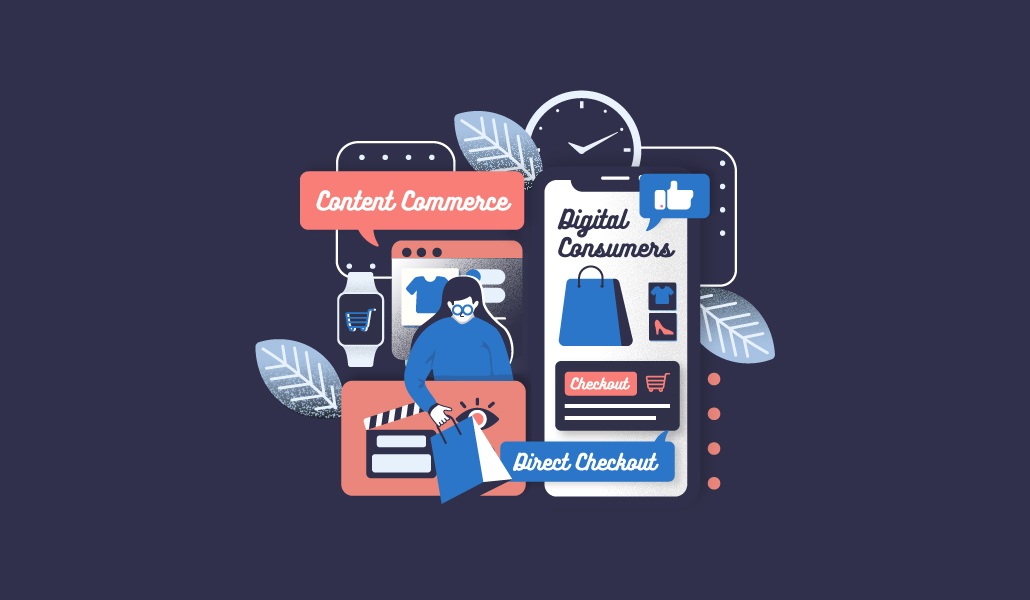The digital customer, born on the internet and more recently shaped by the pandemic, is here to stay, and their numbers will only grow. There was 256 million digital buyers in the United States in 2020. It is predicted that there will be nearly 280 million by 2024.
The digital shopper, who cares less about where they shop — and more about the most convenient, safest, and fastest ways to do so — spends when inspiration strikes, and they expect to a smooth buying journey. Consumers are also ambitious; with the rise of influencer marketing, consumers are following their favorite Instagram or TikTok personalities and aligning themselves with the lifestyles these individuals project – and want to share. Particularly among younger shoppers, consumers have also indicated that they want to be engaged across multiple channels, requiring brands to provide a multi-channel experience.
Rob Sellers, Executive Director of Growth Studio at Engine Creative, a UK-based marketing agency, had this to say about the modern online consumer: “At the macro level, they expect the best in choice, price and of convenience. Simply put, they expect nothing less than exactly what they want very quickly at a competitive price. This means that according to any traditional sense of the customer, people who buy products online are increasingly demanding.
For marketers, the digital customer has more options online than ever before. To reach them across all of these choices, content commerce offers an increasingly seamless path to purchase with minimal friction. The rise of buyable content drives conversions. The approach provides shoppers with inspiring, actionable, and fast-paced buying opportunities at the speed of their multi-channel journeys.
The modern digital consumer shops on social media
Social media is also a big part of what fuels consumers’ desire to explore brands and other shopping opportunities. This is especially the case among Millennials and Gen Z. According to an online retail publication String Storage Age43% of consumers aged 18-24 — and 47% of consumers aged 25-34 — say they search for new brands on social media platforms.
This willingness to explore should not be confused with a willingness to tolerate a less than ideal experience. On the spot, consumers often abandon their cart due to multi-step checkout experiences or when delivery is not free or too expensive for what they are buying. Likewise, shoppers are not always willing to create accounts on sites if they just want to purchase an item. The promise of social media for content commerce has been in-stream decision-making without having to leave the experience already in progress.
Content commerce is a crucial way to reach these restless consumers looking to explore. New tipser search – surveying 332 consumers in the US, UK and Germany – shows that when asked if they would be willing to buy products on Instagram if offered direct payment, 58% said yes . And 35% said the idea of shopping via livestream is an appealing prospect. It turns out that the live streaming experience is the other development front for the new digital consumer.
The race for content commerce is accelerating in the livestream
To win the omnichannel attention game, especially on social media, brands are partnering with influencers and creating opportunities in the livestreaming space.
“One of the best ways to connect with this new digital customer is to partner with influencers to create this omnichannel digital experience and more human connections,” said Adam Whyte, CEO of Edge, a software company specializing in digital influencer marketing. “Meet your customers where they live, as they increasingly express themselves and interact with others on social media.”
Direct purchases are also gaining ground. Currently most popular in China, live streaming experiences where the audience can make a purchase are becoming increasingly important for consumers to see an influencer explore the product they are considering. Making that human connection, even if done on a digital screen, is crucial to sparking consumers’ imaginations as they think about how a particular product or service fits into their lifestyle and identity. .
It’s an increasingly competitive space, and marketers are taking an increasingly diverse approach.
“The way to win in 2021 is to partner with micro and nano-influencers,” Whyte said. “These influencers often have less than 100,000 followers, but their engagement rates are much higher than their celebrity counterparts. Brands that run effective influencer campaigns will partner with many micro and nano influencers across multiple channels. , especially now that there are tools to track influencer performance metrics and perform real-time optimizations.
From the fast-paced expectations of the new digital consumer came the speed and convenience of content commerce marketing. As more brands join the race, publishers are joining them too (Bustle Digital Group recently threw its hat into the purchasable content ring). On all sides, market demands are creating new conversations around what it means to checkout, and that increasingly means reimagining point of sale as an anywhere, anytime moment in the multi-channel flow. .

